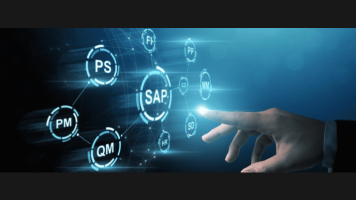SAP Datasphere vs. SAP BW/4HANA: What’s the Future of Your Data Strategy?
- Posted on September 15, 2025
- SAP BTP
- By ROI Blogger
- 342 Views

For decades, the world of SAP data has been dominated by a single, powerful concept: the Business Warehouse (BW). From its early days to the modern, HANA-powered BW/4HANA, it has been the gold standard for structured reporting and analytics. For many businesses here and around the globe, it's the trusted, central source of truth. But the data landscape of 2025 is fundamentally different. Data is no longer confined to our ERP systems; it's scattered across cloud applications, data lakes, and IoT devices.
This new reality has given rise to a critical question for every CIO and IT leader: Is our traditional data warehouse enough? SAP’s answer comes in the form of two distinct platforms: the established SAP BW/4HANA and the forward-looking SAP Datasphere.
This isn't just a choice between an on-premise system and a cloud one. It’s a fundamental decision about your future data architecture. Let’s break down the differences, focusing on the shift to a data mesh, non-SAP data integration, and the key use cases that will define your business's success.
The Shift from Traditional Warehouse to a Business Data Fabric
The core difference between BW/4HANA and Datasphere lies in their underlying philosophy.
SAP BW/4HANA is the pinnacle of the traditional data warehousing approach. It’s designed to be a centralized repository. Data from various sources (primarily SAP systems) is extracted, transformed, and loaded (ETL) into a highly optimized, structured model.
-
Analogy: Think of BW/4HANA as a massive central library. All the books (data) are brought in, meticulously cataloged by expert librarians (IT/BW developers), and placed on specific shelves (InfoCubes/ADSOs). When you need a report, you go to this single, well-organized library to get a definitive answer. It’s powerful, consistent, and reliable for known questions.
SAP Datasphere, on the other hand, is built to enable a business data fabric and a data mesh architecture. Instead of moving all data to one central location, a data fabric focuses on connecting to data where it lives, providing a unified semantic layer and governance across a distributed landscape.
-
Analogy: Datasphere is like a modern digital library network. The main library still exists (perhaps with your core SAP data), but it also provides a universal search portal that can access specialized archives, partner libraries, and online journals (your non-SAP cloud apps, data lakes, etc.) in real-time. It doesn't own all the books, but it knows where they are and how to access them, presenting them to you in a cohesive, easy-to-understand format.
This shift is crucial. The centralized model of BW/4HANA can become a bottleneck, where business users have to wait for IT to model and load new data sources. Datasphere’s decentralized, federated approach empowers business domains to manage their own "data products" while maintaining central governance, which is the core principle of a data mesh.
Integrating Non-SAP Data: The Real Game-Changer
This is where the architectural differences become crystal clear.
In SAP BW/4HANA, integrating non-SAP data is certainly possible, but it almost always involves a physical data movement. You need tools like SAP Data Intelligence or SAP Data Services to build ETL/ELT pipelines to pull data from sources like Salesforce, social media, or external databases into the BW/4HANA structure. This process requires development effort, adds latency, and creates data duplication.
SAP Datasphere is designed for a hybrid world. Its primary strength is data federation and virtualization. It comes with a vast library of pre-built connectors to virtually any data source:
-
Cloud Hyperscalers: Amazon S3, Google BigQuery, Azure Synapse Analytics.
-
SaaS Applications: Salesforce, ServiceNow, Oracle, etc.
-
Databases: Both SQL and NoSQL databases.
With Datasphere, you can create a "virtual" model that combines live sales data from S/4HANA with live marketing campaign data from Salesforce and customer sentiment data from a data lake on AWS—without moving the data first. The system is intelligent enough to push down the processing to the source systems, minimizing data transfer and providing real-time insights. For a dynamic manufacturing hub, the ability to blend production data from S/4HANA with real-time supplier data from a cloud portal is a massive competitive advantage.
Comparing Use Cases: Reporting, Planning, and AI
So, how does this play out in practical, day-to-day scenarios?
1. Reporting & Analytics
-
BW/4HANA: Excels at high-performance, operational reporting on structured SAP data. Think of daily financial statements, sales performance dashboards, and inventory reports. Its pre-aggregated data and OLAP engine are incredibly fast for these "known-knowns." However, self-service BI for business users wanting to blend in new, external data can be cumbersome.
-
Datasphere: Shines in self-service analytics and cross-functional reporting. A business analyst can use the intuitive "Business Builder" to create a semantic model that joins S/4HANA finance data with Google Analytics web traffic data. They can then build their own reports in SAP Analytics Cloud (SAC) on top of this model, without ever filing an IT ticket. Datasphere is about empowering users to answer new questions quickly.
2. Planning
-
BW/4HANA: It is often used as a historical data source for planning tools like SAP Analytics Cloud Planning. Planners look at past performance data stored in BW to inform their future forecasts. The process is solid but can be static.
-
Datasphere: It creates a much more dynamic planning environment. Because it can connect to live external data, planning models in SAC can be enriched in real-time. For example, a demand planner can create a forecast that uses historical sales data from S/4HANA, incorporates a live feed of commodity pricing from a cloud service, and overlays it with marketing event data from another system. This allows for more accurate, agile, and scenario-based planning.
3. AI & Machine Learning 🤖
-
BW/4HANA: It acts as a high-quality, curated data source for AI/ML initiatives. However, the data typically needs to be extracted from BW and moved into a separate data science platform (like Databricks or a hyperscaler ML service) for model training and execution. BW is the starting point, not the execution environment.
-
Datasphere: This is a key strategic advantage. Datasphere is deeply integrated with the broader SAP Business Technology Platform (BTP). Data scientists can access the curated, governed data within Datasphere directly from their tools. Furthermore, with its built-in data federation and access to HANA Cloud's machine learning libraries, you can run predictive models directly on the data without extensive data movement. This drastically reduces the time from data preparation to insight, allowing you to embed intelligence directly into your business processes.
The Future: Coexistence, Not Replacement
So, should you abandon your trusted BW/4HANA system? Not necessarily. The future for most organizations is not a "rip and replace" but a hybrid approach.
BW/4HANA remains a powerful engine for your core, mission-critical SAP reporting. The smart strategy is to use it for what it does best. The future of your data strategy lies in augmenting it with SAP Datasphere as your unifying semantic layer.
You can expose your existing BW/4HANA models into Datasphere, making them available alongside all your non-SAP data sources. This allows you to protect your existing investment while simultaneously opening up your data landscape to the modern use cases of self-service BI, agile planning, and embedded AI.
For businesses and beyond, the choice isn't just about technology. It's about business agility. SAP BW/4HANA helped you understand your business. SAP Datasphere will help you run it in real-time, with all your data, no matter where it resides.





Write a Response